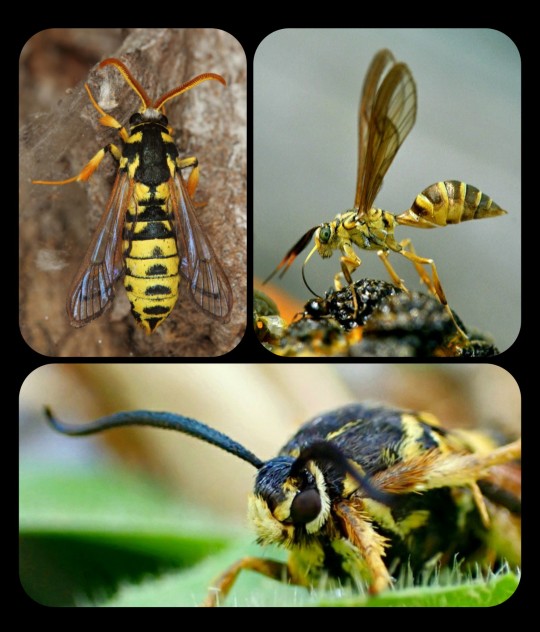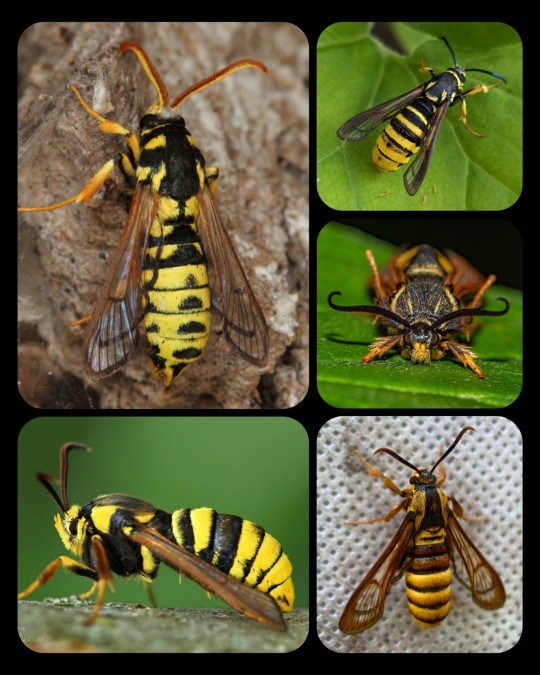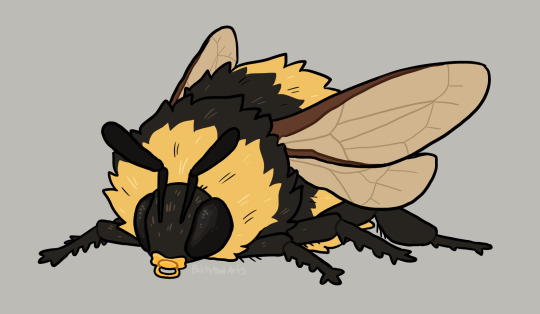Text
Official Official-Bee-Posts post 🐝
OK. All the blogs in this special round 0 are under the cut. Every odd number is against the even below it. We'll see how tumblr feels about the bracket image this time, but I'm not posting it until this round 0 is over.
Due to not wanting to spam your feeds and also the tumblr post limit (there are 253 polls this round!), I will be spreading these out via the queue, posting 50 a day.
1: hasgavlebockenburneddownyet
2: flareon-fanart-collection
3: the-compressor
4: rat-detector-but-evil
5: cantheywinthehungergames
6: official-fluffy-posts
7: would-you-punt-them
8: dailyhomestarfacts
9: ominous-signs
10: rat-detector-24
11: throckmorton-the-skater
12: dailytricksterfox
13: identifying-dogs
14: disappointed-by-lack-of-soup
15: identifying-cat-phenotypes
16: the-real-yahoo-mail
17: alphabetcompletionist
18: guillotinema
19: bocchidaily2024
20: the-official-netherlands
21: makingyourfavesinwebfishing
22: rat-detector-detector-detector
23: yesornopolls
24: posts-i-saw-on-wikipedia
25: elvis-official
26: ebugsdotjpeg
27: crane-detector
28: word-problem-posting
29: onionpainter
30: rat-detector-fail
31: i-make-things-snakes
32: the-djavulsksilverhaj
33: onenicebugperday
34: funnier-when-objectum
35: things-that-are-weezer-blue
36: no-stupid-questions-official
37: i-identify-as-an-ominous-threat
38: mysticmagicrat
39: hot-take-tournament
40: rat-detector-8x
41: cantheykillmacbeth
42: is-this-shakespearean-accurate
43: bear-detector
44: inside-outtakes-daily
45: localairport
46: the-demonhaj
47: cat-spotted
48: suddenlyveryloud
49: probablybadrpgideas
50: your-fav-is-divorced
51: parentheses-posts
52: sans-in-heat
53: ifitwasediblewouldyoueatit
54: same-pic-of-the-blue-moon
55: mcmansionhell
56: dailykafka
57: ofishal-fish-posts
58: gimmick-spice-tolerance-bracket
59: really-fucked-up-stimboards
60: polishpriests
61: identifying-dinosaurs-in-posts
62: iloveants
63: gimmick-blog-bracket
64: the-actual-ocean
65: pointless-achievements
66: digital-slenderman
67: making-your-fave-in-fr
68: twopartposts
69: creatures-in-posts
70: not-a-trampoline-daily
71: echo-flower-from-undertale
72: e-counter
73: is-the-post-reliable
74: the-magentahaj
75: the-timeloop-tourney
76: friend-myth-kill
77: couldtransitionsaveher
78: smashorpassgilf
79: ginger-ale-official
80: is-this-fascism
81: official-boob-posts
82: los-camp-daily
83: yesterdays-xkcd
84: earth-updates-today
85: rat-detector
86: fuck-you-in-particular
87: making-you-in-ponytown
88: i-shelve-posts
89: haveyouatethisfruit
90: new-dinosaurs
91: cantheysurvive2001aspaceodyssey
92: stereosexuals-daily
93: does-this-require-cyanobacteria
94: rat-detector-333
95: mammalidentifier
96: is-your-post-grey
97: kittybroker
98: dilfs-dot-com
99: howoldisjimmycarter
100: pokemonbattletournament
101: reallybadblackoutpoems
102: unhelpfultarot
103: postsofbabel
104: the-offical-vine
105: drawing-you-as-a-critter
106: incorrectconspiracytheorist
107: arewebeholdingaman
108: the-official-chaldea
109: lowpolyanimals
110: the-real-will-wood-daily
111: i-want-tennis-ball
112: united-states-health-care
113: snailifier
114: locked-in-or-tweaking
115: the-purple-painter
116: the-actual-catacombs
117: rick-roller
118: identifying-spacecraft-in-posts
119: parappa-raps
120: inthetags
121: little-bitch-detector
122: elitegreet
123: blood-heritage-posts
124: words-that-could-be-jtoh-towers
125: scp-threats-is-back
126: ratdetectordetectordetectordet
127: fake-post-archive
128: ratdectector23
129: one-time-i-dreamt
130: could-they-win-a-holy-grail-war
131: shirtsthatgohard
132: rhinoceros-beetle-official
133: tf2heritageposts
134: pokemon-cards-hourly
135: everydayspamton
136: rat-detector-334
137: in-the-bible
138: fav-character-shroin-count
139: identifying-horses-in-posts
140: cactus-detector
141: peoplegettingkindamadatfood
142: spirit-phone-daily
143: official-mantis-shrimp-posts
144: rat-detector-236
145: whatcoloristhatcat
146: rat-eliminator
147: identifying-maille-weaves
148: the-lilahaj
149: things-that-are-not-true
150: ratdetector-x26
151: terriblerealestateagentphotos
152: in-case-i-die-daily
153: hellsite-proteins
154: good-pokemon-center-reviews
155: how-many-letters
156: characters-with-garlic-bread
157: same-picture-of-a-rock-every-day
158: costcopizzablog
159: shrimpradar
160: do-you-know-this-adhd-character
161: identifying-cars-in-posts
162: shakespearean-suffering
163: the-firey-painter
164: official-wasp-posts
165: identifying-birds
166: pale-fur-my-moirail
167: carbon-monoxide-detector
168: out-of-context-tbcu
169: sealsdaily
170: a-counter
171: counter-facts-i-just-made-up
172: linguistwho
173: validwarriorcatsnames
174: the-litenhaj
175: i-type-things
176: fr-winn-dixie
177: hellsite-hall-of-fame
178: official-hater-posts
179: miscellaneous-marios
180: content-free
181: eroticismofthemachinedetector
182: weeklycandacedrawings
183: asciicompletionist
184: the-rosahaj
185: my-hobby-is-finding-the-source
186: anarchist-chess
187: the-hex-project
188: would-you-eat-them
189: apolladay
190: hajtale
191: evilwizard
192: the-aftonsparv
193: i-give-worms
194: official-knight-posts
195: fluttershywheresheshouldntbe
196: pokemontheywouldhave
197: card-of-the-day
198: mtg-cards-hourly
199: writing-prompt-s
200: mcr5-thoughts-every-other-day
201: memes-to-show-the-past
202: ratdetectortheninth
203: can-they-lift-thors-hammer
204: rat-detectors-detector
205: is-jk-rowling-dead-yet
206: orca-detector
207: amphibianaday
208: jstor
209: dark-wil-wheaton
210: chicago-mentioned
211: critter-creature-or-beast
212: civilisation-updates
213: yeahokayillreblogthat
214: worldofultimategaming
215: maryland-officially
216: fecundinex-official
217: whoishotteranimepolls
218: towhee-enjoyer
219: official-linguistics-post
220: t-counter
221: text-inverter
222: blorbo-court
223: latinare
224: detector-rat
225: making-you-in-atlyss
226: the-turkoshaj
227: i-give-you-a-fish
228: videos-i-didnt-make
229: i-make-things-spheres
230: 1337sp34kr
231: amongus-text-detector
232: rat-detector-16
233: alonglistofbirds
234: half-fey-freak-of-nature
235: girl-detector
236: cursed-facebook-marketplace
237: mouse-spotted
238: accidental-will-wood-reference
239: dear-ao3
240: daily-pokemon-polls
241: googlyeyesonmagiccards
242: totally-france
243: baba-is-blog
244: neilcicierega-daily
245: rat-detector-detector
246: i-give-you-a-manul
247: xkcd-for-that
248: r-ominous-positivity
249: who-jumps-for-the-beef
250: ace-attorney-smash-or-pass
251: making-you-in-spore
252: binas-official
253: i-say-ok
254: rat-detector-redacted
255: couldtheycatchkira
256: connection-terminated-blog
257: identifying-typewriters-in-posts
258: ratdetector13
259: post-store
260: unitedstatesoffandom
261: booktomoviebrawl
262: same-picture-of-benson-every-day
263: bestanimal
264: poorly-identifying-cats-in-posts
265: secondbeatsongs
266: museum-place-of-guys
267: musical-posts
268: libraryofbabel-postlocator
269: todays-xkcd
270: the-gimmick-teachers
271: numberscompletionist
272: am-i-the-asshole-official
273: the-glitter-painter
274: mcr-reference
275: eggblackoutpoetry
276: shinypokemonshowdown
277: rating-shittysawtraps
278: fnaf-flags
279: translatingpostsinfrench
280: rat-detector-twelve
281: pressxtosetfree
282: the-blahaj
283: transit-fag
284: orange-content-rater
285: lichenaday
286: eatorfuck
287: i-identify-guns-in-posts
288: daily-kobold-facts
289: front-facing-pokemon
290: apple-counter
291: thoughts-of-eel
292: rat-detector-19x
293: official-crab-posts
294: its-target-official
295: making-you-in-roblox
296: the-purpurhaj
297: aita-blorbos
298: mcytblrconfessions
299: doyoulikethissong-poll
300: i-remove-color-from-posts
301: flametexting-posts
302: medici-official
303: dailyhatsune
304: litwtc-referrer
305: cat-identifier
306: the-rat-detector-couple-the-1st
307: dailyquests
308: posts-without-the-letter-e
309: the-magenta-painter
310: space-update-today
311: haveyouheardthisband
312: videogameaxolotls
313: i-make-things-into-faces
314: eial-daily
315: the-haiku-bot
316: rat-detector-84
317: ao3org
318: your-fave-as-a-fate-servant
319: would-they-survive
320: chess-rook
321: making-you-in-sticky-business
322: born-against-daily
323: catcrumb
324: birdcounter
325: wtf-scientific-papers
326: is-it-ranboos-birthday
327: herpsandbirds
328: reading-comp-wrong-answers
329: ryunumber
330: c-counter
331: randomitemdrop
332: squeakdreamsresort
333: gimmick-thief-thief
334: favevostagepoll
335: simplified-birds
336: nom-nom-counter
337: i-make-things-content-aware
338: cookieclickercookieeater
339: ca-dmv-bot
340: rat-detector-the-22nd
341: rotating-donuts-blog
342: duothelingo
343: couldtheybekira
344: etho-spotted
345: contextfreepatentart
346: svard-haj
347: fixing-bad-posts
348: starskids-twisted-daily
349: the-icy-painter
350: rat-detector-the-26th
351: jesus-holding-your-fave
352: goodpokeaniscreencaps
353: making-you-in-lps
354: finding-tv-girl
355: is-destiel-canon-yet
356: rat-detector-13
357: it-hurts-to-post
358: rat-detector-seven
359: aistobascistod
360: nether-have-i-ever
361: shit-hdb-would-say
362: objectum-culture-is
363: hitboxesonstockimages
364: black-parade-daily
365: howdotheyliketheirsteak
366: lemondemonlyrics-daily
367: its-wednesday-sparkle-on
368: king-of-the-gods-zeus
369: certifiednewyorkposts
370: jeweledmonstera
371: todaysbird
372: south-carolina-detector
373: the-disempunctuationer
374: scale-polls
375: theyshapedlikefriends
376: big-mayo-official
377: elementcattos
378: massachusetts-official
379: theshitpostcalligrapher
380: hawaii-part-ii-daily
381: fish-identifier
382: the-universe-devs
383: identifying-cars-in-art
384: snake-spotted
385: banjobebleping
386: rat-detector-the-21st
387: relevant-wikipedia-articles
388: noahbaumbachmaritalstatus
389: shark-detector
390: rat-detector36
391: gimmickblog-taxonomist
392: official-level-5
393: peeledpokemon
394: bad-time-analogies
395: bovineblogger
396: the-eldritch-skrackhaj
397: periodiccompletionist
398: soniclesbianflags
399: ohio-thestate
400: fakest-thickwoman
401: bible-word-counter
402: rat-detector-the-18th
403: gimmick-thief
404: colorpicked-flags-from-one-guy
405: three-dee-ess
406: salem-village-everyday
407: the-frightening-ghoul
408: cool-rocks-official
409: bugthingsdaily
410: how-much-yellow
411: is-it-out-of-touch-thursday
412: ditto-dex
413: todays-problematic-ship
414: how-many-purples
415: thefoilguy
416: your-fave-as-owl
417: whatsthebird
418: the-first-bank
419: accidental-homestuck
420: thingsthatcannotsaveyou
421: what-day-of-the-week
422: jamface-daily
423: househeritageposts
424: fictitious-grail-war
425: fox-detector
426: spine-gif
427: hazard-symbols-that-fuck-hard
428: rat-dedecdor
429: worlds-worst-ships
430: marinememes
431: dyktvideogamesfx
432: best-u-of-feenis-program
433: official-olm-posts
434: frollosuggestions
435: lesserknowncryptids
436: random-askbox-shit
437: hands-you-a-spatula
438: alyrictoasongbythecranewives
439: transparentcatpngs
440: sideblog-with-everyone
441: the-reverser
442: rat-detector-72
443: charl0ttan
444: pokemonxniccage
445: is-deltarune-tomorrow
446: ratdetector-x11
447: official-cannibalism-posts
448: hituwithabat
449: magic-vending-machine
450: universal-posting
451: statistical-distr-of-polls
452: incorrect-guilty-gear
453: dog-spotted
454: cccc-reference-counter
455: can-they-assemble-ikea-furniture
456: moonpawmybeloved
457: dailypokemoncrochet
458: rat-detector-the-14th
459: post-uwuifier
460: incaseimakeit-daily
461: makingyourfavindti
462: willwoodoutofcontext
463: was-house-fruity
464: bozarotexts
465: textposttropes
466: i-add-ampersands-to-posts
467: free-post-store
468: rat-detector-rat-89
469: sat-a-day
470: willwooddaily
471: wouldyoudoitforaklondikebar
472: c-official
473: where-is-tom-scott-today
474: tfihwg-daily
475: littleguysdaily
476: rainworld-name-verifier
477: badjokesbyjeff
478: rat-detector-to-the-5th-power
479: identifying-planes-in-posts
480: guiltygearofficial
481: doyouknowthisdisabledcharacter
482: official-bee-posts
483: making-you-in-mc
484: rat-detector-thirteen
485: voiceclaim-polls
486: walmart-the-official
487: tf2-post-archive
488: olipopsoda
489: making-u-a-cube
490: rat-detector-15
491: identifying-guns-in-posts
492: dailyiiwheelship
493: postanagramgenerator
494: will-wood-referrer
495: punctuation-completionist
496: daily-vitamin-an
497: i-give-chess-pieces-to-people
498: left-handed-minecraft-mobs
499: colourpickingpride
500: eurovision-song-bracket
501: incognitopolls
502: self-proclaimed-brick-expert
503: shittysawtraps
504: self-ish-daily
505: i-give-olms-to-people
506: scromble
137 notes
·
View notes
Text
I'm changing it up and becoming a moth blog. This post will serve as the segue from bees to moths nicely. No more🐝, just moth
Official moth post!
Moths in Disguise: these are all just harmless moths that have developed the ability to mimic wasps, bees, and/or hornets

Top Row (left to right): Eusphecia pimplaeformis and Myrmecopsis polistes; Bottom Row: Pennisetia marginatum
Moths are exceptionally skilled when it comes to mimicry, and there are hundreds of moth species that rely on that tactic as a way to protect themselves from predators. Their disguises are numerous and varied, but hymenopteran mimicry is particularly common, especially among the moths that belong to subfamily Sesiidae and family Arctiinae.

Yellowjacket-Mimicking Moths: Pseudosphex sp. (top and bottom left) and Myrmecopsis polistes (bottom right)
Some of their disguises involve more than just a physical resemblance -- there are some moths that also engage in behavioral and/or acoustic mimicry, meaning that they can imitate the specific sounds and behaviors of their hymenopteran models. In some cases, these moths are so convincing that they can even fool the actual wasps/bees that they are mimicking.
Such a detailed and intricate disguise is unusual even among mimics, and researchers believe that it developed partly as a way to trick the wasps into treating the mimic like one of their own. Wasps tend to prey upon moths (and many other insects), but they are innately non-aggressive toward their own nest-mates, which are identified by sight -- so if the moth can convincingly impersonate its model, then it can avoid being eaten by predatory wasps.

Wasp-Mimicking Moths: Pseudosphex ichneumonea (top), Myrmecopsis sp. (bottom left), and Pseudosphex sp. (bottom right)
There are many moths that can also mimic hornets, bumblebees, and carpenter bees.

Hornet-Mimicking Moths: Eusphecia pimplaeformis (top left), Sesia apiformis (bottom left), Paranthrene simulans (top right), Pennisetia marginatum (middle right), and Sphecodoptera scribai (bottom left)

Bumblebee-Mimicking Moths: Hemaris tityus (top and bottom left) and Hemaris affinis (bottom right)
Moths are some of the most talented mimics in the natural world, as illustrated by their mastery of hymenopteran mimicry. But it's not just bees, hornets, and wasps -- there are many other forms of mimicry that can be found among moths, and the resemblance is often staggering.
Moths deserve far more credit than they receive, to be honest, because they are so incredibly interesting/diverse.
Sources & More Info:
Journal of Ecology and Evolution: A Hypothesis to Explain the Accuracy of Wasp Resemblances
Frontiers in Zoology: Southeast Asian clearwing moths buzz like their model bees
Royal Society Publishing: Moving like a model: mimicry of hymenopteran flight trajectories by clearwing moths of Southeast Asian rainforests
906 notes
·
View notes
Text
Official bee post! 🐝
buzz buzz buzz buzz buzz buzz buzz buzz buzz buzz buzz buzz buzz buzz buzz buzz buzz buzz buzz buzz buzz buzz buzz buzz buzz buzz buzz buzz buzz buzz buzz buzz
buzz buzz buzz buzz buzz buzz buzz buzz buzz buzz buzz buzz buzz buzz buzz buzz
buzz buzz buzz buzz buzz buzz buzz buzz buzz buzz buzz buzz buzz buzz buzz buzz
buzz buzz buzz buzz buzz buzz buzz buzz buzz buzz buzz buzz buzz buzz buzz buzz buzz buzz buzz buzz buzz buzz buzz buzz buzz buzz buzz buzz buzz buzz buzz buzz buzz buzz buzz buzz buzz buzz buzz buzz buzz buzz buzz buzz buzz buzz buzz buzz buzz buzz buzz buzz buzz buzz buzz buzz buzz buzz buzz buzz buzz buzz buzz buzz buzz buzz buzz buzz buzz buzz buzz buzz buzz buzz buzz buzz buzz buzz buzz buzz buzz buzz buzz buzz buzz buzz buzz buzz buzz buzz buzz buzz buzz buzz buzz buzz
buzz buzz buzz buzz buzz buzz buzz buzz buzz buzz buzz buzz buzz buzz buzz buzz
buzz buzz buzz buzz buzz buzz buzz buzz buzz buzz buzz buzz buzz buzz buzz buzz buzz buzz buzz buzz buzz buzz buzz buzz buzz buzz buzz buzz buzz buzz buzz buzz
buzz buzz buzz buzz buzz buzz buzz buzz buzz buzz buzz buzz buzz buzz buzz buzz
buzz buzz buzz buzz buzz buzz buzz buzz buzz buzz buzz buzz buzz buzz buzz buzz buzz buzz buzz buzz buzz buzz buzz buzz buzz buzz buzz buzz buzz buzz buzz buzz buzz buzz buzz buzz buzz buzz buzz buzz buzz buzz buzz buzz buzz buzz buzz buzz buzz buzz buzz buzz buzz buzz buzz buzz buzz buzz buzz buzz buzz buzz buzz buzz buzz buzz buzz buzz buzz buzz buzz buzz buzz buzz buzz buzz buzz buzz buzz buzz buzz buzz buzz buzz buzz buzz buzz buzz buzz buzz buzz buzz buzz buzz buzz buzz buzz buzz buzz buzz buzz buzz buzz buzz buzz buzz buzz buzz buzz buzz buzz buzz buzz buzz buzz buzz buzz buzz buzz buzz buzz buzz buzz buzz buzz buzz buzz buzz buzz buzz buzz buzz buzz buzz buzz buzz buzz buzz buzz buzz buzz buzz buzz buzz buzz buzz buzz buzz buzz buzz buzz buzz buzz buzz buzz buzz buzz buzz buzz buzz
buzz buzz buzz buzz buzz buzz buzz buzz buzz buzz buzz buzz buzz buzz buzz buzz buzz buzz buzz buzz buzz buzz buzz buzz buzz buzz buzz buzz buzz buzz buzz buzz
buzz buzz buzz buzz buzz buzz buzz buzz buzz buzz buzz buzz buzz buzz buzz buzz buzz buzz buzz buzz buzz buzz buzz buzz buzz buzz buzz buzz buzz buzz buzz buzz buzz buzz buzz buzz buzz buzz buzz buzz buzz buzz buzz buzz buzz buzz buzz buzz
buzz buzz buzz buzz buzz buzz buzz buzz buzz buzz buzz buzz buzz buzz buzz buzz buzz buzz buzz buzz buzz buzz buzz buzz buzz buzz buzz buzz buzz buzz buzz buzz
buzz buzz buzz buzz buzz buzz buzz buzz buzz buzz buzz buzz buzz buzz buzz buzz buzz buzz buzz buzz buzz buzz buzz buzz buzz buzz buzz buzz buzz buzz buzz buzz buzz buzz buzz buzz buzz buzz buzz buzz buzz buzz buzz buzz buzz buzz buzz buzz buzz buzz buzz buzz buzz buzz buzz buzz buzz buzz buzz buzz buzz buzz buzz buzz buzz buzz buzz buzz buzz buzz buzz buzz buzz buzz buzz buzz buzz buzz buzz buzz buzz buzz buzz buzz buzz buzz buzz buzz buzz buzz buzz buzz buzz buzz buzz buzz buzz buzz buzz buzz buzz buzz buzz buzz buzz buzz buzz buzz buzz buzz buzz buzz buzz buzz buzz buzz buzz buzz buzz buzz buzz buzz buzz buzz buzz buzz buzz buzz buzz buzz buzz buzz buzz buzz buzz buzz buzz buzz buzz buzz buzz buzz buzz buzz buzz buzz buzz buzz buzz buzz buzz buzz buzz buzz buzz buzz buzz buzz buzz buzz buzz buzz buzz buzz buzz buzz buzz buzz buzz buzz buzz buzz buzz buzz buzz buzz buzz buzz buzz buzz buzz buzz buzz buzz buzz buzz buzz buzz buzz buzz buzz buzz buzz buzz buzz buzz buzz buzz buzz buzz buzz buzz buzz buzz buzz buzz buzz buzz buzz buzz buzz buzz buzz buzz buzz buzz buzz buzz buzz buzz buzz buzz buzz buzz buzz buzz buzz buzz buzz buzz buzz buzz buzz buzz buzz buzz buzz buzz buzz buzz buzz buzz buzz buzz buzz buzz buzz buzz buzz buzz buzz buzz buzz buzz buzz buzz buzz buzz buzz buzz buzz buzz buzz buzz buzz buzz buzz buzz buzz buzz buzz buzz buzz buzz buzz buzz buzz buzz buzz buzz buzz buzz buzz buzz buzz buzz buzz buzz buzz buzz buzz buzz buzz buzz buzz buzz buzz buzz buzz buzz buzz buzz buzz buzz buzz buzz buzz buzz buzz buzz buzz buzz buzz buzz buzz buzz buzz buzz buzz buzz buzz buzz buzz buzz buzz buzz buzz buzz buzz buzz buzz buzz buzz buzz buzz buzz buzz buzz buzz buzz buzz buzz buzz buzz buzz buzz buzz buzz buzz buzz buzz buzz buzz buzz buzz buzz buzz buzz buzz buzz buzz buzz buzz buzz buzz buzz buzz buzz buzz buzz buzz buzz buzz buzz buzz buzz buzz buzz buzz buzz buzz buzz buzz buzz buzz buzz buzz buzz buzz buzz buzz buzz buzz buzz buzz buzz buzz buzz buzz buzz buzz buzz buzz buzz buzz buzz buzz buzz buzz buzz buzz buzz buzz buzz buzz buzz buzz buzz buzz buzz buzz buzz buzz buzz buzz buzz buzz buzz buzz buzz buzz buzz buzz buzz buzz buzz buzz buzz buzz buzz buzz buzz buzz buzz buzz buzz buzz buzz buzz buzz buzz buzz buzz buzz buzz buzz buzz buzz buzz buzz buzz buzz buzz buzz buzz buzz buzz buzz buzz buzz buzz buzz buzz buzz buzz buzz buzz buzz buzz buzz buzz buzz buzz buzz buzz buzz buzz buzz buzz buzz buzz buzz buzz buzz buzz buzz buzz buzz buzz buzz buzz buzz buzz buzz buzz buzz buzz buzz buzz buzz buzz buzz buzz buzz buzz buzz buzz buzz buzz buzz buzz buzz buzz buzz buzz buzz buzz buzz buzz buzz buzz buzz buzz buzz buzz buzz buzz buzz buzz buzz buzz buzz buzz buzz buzz buzz buzz buzz buzz buzz buzz buzz buzz buzz buzz buzz buzz buzz buzz buzz buzz buzz buzz buzz buzz buzz buzz buzz buzz buzz buzz buzz buzz buzz buzz buzz buzz buzz buzz buzz buzz buzz buzz buzz buzz buzz buzz buzz buzz buzz buzz buzz
buzz buzz buzz buzz buzz buzz buzz buzz buzz buzz buzz buzz buzz buzz buzz buzz buzz buzz buzz buzz buzz buzz buzz buzz buzz buzz buzz buzz buzz buzz buzz buzz buzz buzz buzz buzz buzz buzz buzz buzz buzz buzz buzz buzz buzz buzz buzz buzz buzz buzz buzz buzz buzz buzz buzz buzz buzz buzz buzz buzz buzz buzz buzz buzz buzz buzz buzz buzz buzz buzz buzz buzz buzz buzz buzz buzz buzz buzz buzz buzz buzz buzz buzz buzz buzz buzz buzz buzz buzz buzz buzz buzz buzz buzz buzz buzz buzz buzz buzz buzz buzz buzz buzz buzz buzz buzz buzz buzz buzz buzz buzz buzz buzz buzz buzz buzz buzz buzz buzz buzz buzz buzz buzz buzz buzz buzz buzz buzz buzz buzz buzz buzz buzz buzz buzz buzz buzz buzz buzz buzz buzz buzz buzz buzz buzz buzz buzz buzz buzz buzz buzz buzz buzz buzz buzz buzz buzz buzz buzz buzz buzz buzz buzz buzz buzz buzz buzz buzz buzz buzz buzz buzz buzz buzz buzz buzz buzz buzz buzz buzz buzz buzz buzz buzz buzz buzz buzz buzz buzz buzz buzz buzz buzz buzz buzz buzz buzz buzz buzz buzz
buzz buzz buzz buzz buzz buzz buzz buzz buzz buzz buzz buzz buzz buzz buzz buzz buzz buzz buzz buzz buzz buzz buzz buzz
8 notes
·
View notes
Text
Official bee post! 🐝

he go bzzzzzz
bee embroidery, 2025. available in my shop.
870 notes
·
View notes
Text
Official bee post

friends asked me to draw a bee with a binky here you guys can have it too
32K notes
·
View notes
Text
Official bee-having millennials post! 🐝

20K notes
·
View notes
Text
Official bee post!

Buff-tailed Bumblebee - Abelhão (Bombus terrestris)
Carnaxide/Portugal (19/02/2025)
[Nikon D7100; AF 105mm Micro-Nikkor F2,8]
77 notes
·
View notes
Photo
Official bee post 🐝








Kiki’s Delivery Service 魔女の宅急便 1989 | dir. Hayao Miyazaki
4K notes
·
View notes
Text
Official bee post! 🐝 🏳️⚧️

Fuck - and I can’t stress this enough - yeah.
16K notes
·
View notes
Text
Official ine-bree-ated bee post! 🍺 🐝

Sir you’re drunk
7K notes
·
View notes
Text
Official bee post!! 🐝

"Bee" by Murvyn Lowe.
241 notes
·
View notes
Text
Official bee movie post 🐝 🎥

38K notes
·
View notes
Text
Official bee post! 🐝

4K notes
·
View notes
Text
Official bee post! 🐝

61 notes
·
View notes
Text
Official bee post! 🐝 🐝 🐝 🐝

Bee grateful for such variety!
320 notes
·
View notes
Text
Official bee post 🐝
One of the most damaging assumptions people make about ecology is that if something was really THAT bad for the environment: it would be protected through legislation This is just absolutely not the case in all but the most extreme situations, in the United States. Most pesticides sold in stores? Terrible. Many plants sold in stores? Invasive species. Diving this coral reef must not hurt it? Actually its unbelievably fragile. MANY dwindling species? Not even on the radar of the endangered species act. Sadly...many such cases.
64 notes
·
View notes
Text
Official bee post 🐝

21K notes
·
View notes